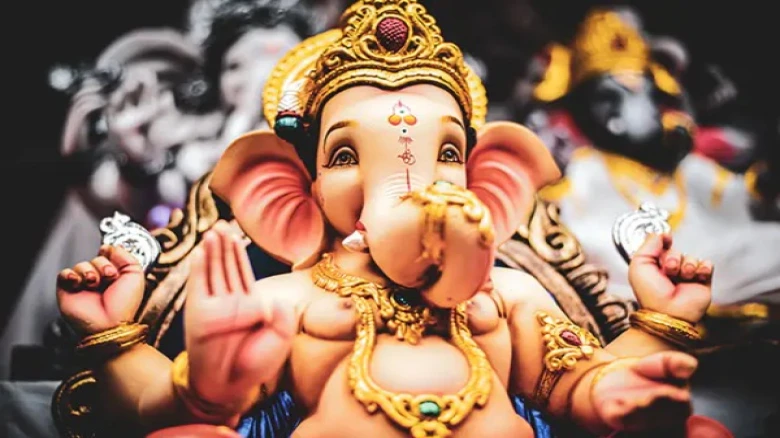Ahead of Ganesha Chaturthi, learn all you need to know about the ten-day auspicious event, from its significance to Muhurat here.
Digital Desk: After two years of limited celebration, the ten-day auspicious Ganesha Chaturthi is now underway. People all around India celebrate this event with much pomp and spectacle. However, it is primarily observed in Maharashtra, Telangana, Andhra Pradesh, Maharashtra, and other states.
On the first day of the celebration, people greet Ganpatti Bappa by placing Lord Ganesha statues in their houses. Devotees adorn and worship the elephant-headed God before burying the idols in water after three, five, or ten days.
The time worshippers keep Lord Ganesha statues at home for devotion is entirely up to them. There are several tales and beliefs that surround the celebration of this holiday. Learn about some of them as well as the auspicious periods of Ganesh Sthapna and Visarjan.
Lord Ganesha's Birth story:
Lord Ganesha is said to have been born on the Chaturthi Tithi of Shukla Paksha in the Bhadrapada month, which occurs on August 31 this year according to the Gregorian calendar.
According to the popular account of Lord Ganesha's birth, which is mentioned in several ancient books, Goddess Parvati created Lord Ganesha out of the sandalwood paste she used for bathing. She instructed him to stand to watch at the door until she returned from her bath. Lord Shiva came to visit his bride while fulfilling his job. When Lord Ganesha refused to see Goddess Parvati, Lord Shiva became enraged and severed Lord Ganesha's head from his body.
When Goddess saw this, she became outraged and demanded that everything be destroyed if she did not have her son back. As the situation deteriorated, Lord Shiva requested the head of a baby animal whose mother was facing the other direction from her infant.
To fulfill this condition, Lord Shiva picked a newborn elephant's head for the task, following which he joined the elephant head to Lord Ganesha's body. Ganesh Chaturthi has been observed since then.
The Ganesha festival is a celebration of culture-
Since the reign of Chatrapati Shivaji Maharaj, the event has been celebrated extravagantly. However, Bal Gangadhar Tilak revived the celebration to bring the populace together and heal the caste divide.
In 1893, he founded the Kesha Keshavi Naik Chawl Sarvajanik Ganeshotsav Mandal in Girgaum, which is still in operation today. He also started the custom of erecting Lord Ganesha idols during the festival to instill a sense of nationalism.
People think he was the first to erect a huge clay statue of Lord Ganesh in a public location and inaugurate the 10-day celebration.
Timings and Muhurat
Ganesh Chaturthi, which this year falls on August 31st, will mark the beginning of the festivities. The Ganesh Chaturthi tithi will, however, happen between August 30 and August 31. The Tithi time will start at 3:33 PM on August 30 and end at 3:22 PM on August 31. The event will come to a close on Anant Chaturdashi, which falls on September 9 and is when devotees would submerge the Ganesha statue in the water.
Do not see the moon on Ganesh Chaturthi
A moon sighting on Ganesh Chaturthi should be avoided, according to traditional beliefs. On this day, everyone who sees the moon will either experience Mithya Dosham or Mithya Kalank.
According to the Hindu calendar, it is best to avoid seeing the moon on August 30 from 3:33 pm to 8:40 pm and on August 31 from 9:29 am to 9:10 pm.

Leave A Comment